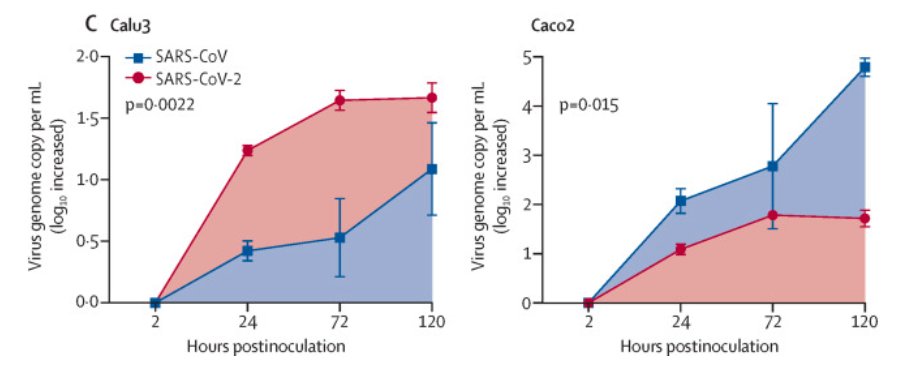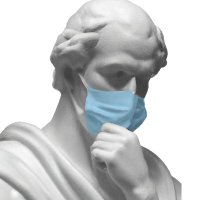
Michael Lin, MD PhD  @michaelzlin
@michaelzlin

Jun 7, 2021
53 tweets
There have been a lot of stories recently on the search into COVID19/SARSCoV2 origins, but they have been written to tell stories of intrigue or mystery, not to summarize known facts.
Thus I thought it might be useful to succinctly summarize what we actually know...
1/n
I'll say from the outset we know zero about where sarscov2 itself came from, so the only facts we can list are those that could be proximally relevant. That is, each of these facts is either about SARSCoV2 discovery or just one potential step removed from SARSCoV2 origins.
2/n
First, the briefest bit of background: SARSCoV2 is in the clade or coronaviruses called the sarbecoviruses, named after its first known member, SARSCoV1, the cause of SARS discovered in 2002. SARSCoV1 and SARSCoV2 are 80% identical.
3/n
They essentially cause the same range of pathologies (flu-like disease which then progresses sometimes to inflammatory pneumonia and sometimes systemic inflammation), but with very different outcome distributions
4/n
Now, on to the circumstantial facts.
1. The 1st known case of SARSCoV2 disease was detected on 2019/12/8 in Wuhan, China. Most cases in the next 3 wks were linked to the Huanan seafood market, but the 1st case, and 4 of the first 5, were not.
nejm.org/doi/10.1056/ne
5/n
2. The closest known sarbecovirus to SARSCoV2 is RaTG13 (96%), which was isolated from a Mojiang mine in 2013 by WIV scientists. WIV scientists were alerted to the mine after 3 miners contracted a SARS-like pneumonia and died.
frontiersin.org/articles/10.33
6/n
3. The wild bat-resident precursor to SARSCoV2 has not yet been found but it is not RaTG13 itself, whose 96% similarity still suggests 50 years of divergence from SARSCoV2.
nature.com/articles/s4156
7/n
4. The first paper on RaTG13 by Shi Zhengli of WIV (2020/2, nature.com/articles/s4158) did not discuss where RaTG13 came from; this was figured out by DRASTIC (2020/5, newsweek.com/exclusive-how-).
8/n
Although RaTG13 is not the wild precursor to SARSCoV2, details about where, when, and why it was isolated is relevant to SARSCoV2, as it provides a plausible path for the transport (knowing or unknowing) of SARSCoV2 to Wuhan.
9/n
5. Zhengli Shi's group at WIV was sent serum samples from the sick miners to test for antibodies that react to SARSCoV1. The PhD thesis of Huang Canping recorded that 4 miners' sera were positive for SARSCoV1-reactive antibodies.
frontiersin.org/articles/10.33
10/n
6. Note antibodies raised against SARSCoV2 cross-react to SARSCoV1 and vice versa. Thus a positive reaction to SARSCoV1 antigens, if true, in the miners' serum would indicate some sort of sarbecovirus, which could have at least 20% divergence from SARSCoV1
sciencedirect.com/science/articl
7. I verified the original statement in Huang's thesis about the miners being seropositive for sarbecovirus. Whether the miners were infected with a sarbecovirus is relevant for assessing whether it's worth attempting to find SARSCoV2 sequences in the miner serum samples.
11/n
8. However, Zhengli Shi said in 2020.11 that the miners were seronegative for SARSCoV1 antibodies in 2012. That contradicts Huang's thesis, so only one can be correct. Shi said the sera were also negative for SARSCoV2 antibodies when retested in 2020. nature.com/articles/s4158
12/n
9. It is not known if the miner serum samples that yielded the 9 sarbecoviruses have since been tested to see if they contained SARSCoV2, but now we know the SARSCoV2 sequence, it would be straightforward to do the PCR.
13/n
10. Thus whether the wild precursor to SARSCoV2 was in the Mojiang mine is unknown, regardless of whether Huang or Shi is correct. But if Huang is correct, it's worth PCRing from the miners' sera to look for it. If Shi is correct, it's not worth doing so.
14/n
11. Shi reported obtaining sequences of 9 sarbecoviruses (including RaTG13) out of 293 coronaviruses from 1322 bat guano samples from the mine 2012-2015. Shi said next-gen sequencing in 2018 allowed recovery of more RaTG13 sequence.
nature.com/articles/s4158
15/n
12. Shi has not said if next-gen sequencing has now been attempted on those 1322 samples to look for SARSCoV2.
16/n
13. Shi has not said if WIV attempted to culture those 9 sarbecoviruses. But WHO's Embarek may know: "They never succeeded to culture a virus out of the bat feces sample.” Not clear if he was speaking loosely, but this implies an attempt.
wsj.com/articles/wuhan
17/n
14. Besides WIV, Wuhan CDC was also involved in bat collection and virus sampling of the Mojiang mine and various caves
washingtonpost.com/world/asia_pac
18/n
15. Regarding a potential wildlife origin, sequencing of thousands of animal samples in and around Wuhan and in suppliers to Wuhan markets have not found SARSCoV2, per the WHO joint report 4/2021
19/n
16. The only other sarbecovirus to have entered humans is SARSCoV1, so its transmission path is often cited as a model. It jumped from civets to humans in wildlife markets in Guangdong province, and its ultimate reservoir is believed to be bats. nejm.org/doi/10.1056/NE
20/n
17. However WIV1 and WIV16, the closest known bat-resident viruses to SARSCoV1 (95/95%), have the ability to infect human cells directly. So in-civet evolution was not necessary; direct bats to humans was possible too.
journals.asm.org/doi/10.1128/JV
21/n
18. Regarding virus engineering, Shi's lab had made chimeric sarbecoviruses by inserting newly discovered spike sequences into the WIV1 backbone, and assessing for retained ability to to infect human cells (WIV1 already had this capability).
journals.plos.org/plospathogens/
22/n
19. They have not reported using other backbones to perform chimeric virus work, so the above is the closest known work to "gain-of-function" studies.
23/n
20. Cultures of WIV1 were done at BSL2 level (gloves, lab coats, eye protection and masks depending on perceived risk). The paper that describes the virus production method (and referenced by the chimeric virus paper) is
journals.asm.org/doi/10.1128/JV
24/n
And that's it. That's all the circumstantial facts. We have no direct facts on SARSCoV2 origins. On one hand we have facts on RaTG13 providing an example path that SARSCoV could have taken to Wuhan, and on the other the precedence of SARS1 that's non-specific to Wuhan.
25/n
There's some negative circumstantial data: the virus-negative animal samples, and the failure to report results of easy searches for SARSCoV2 in samples in WIV's possession that a lab interested in papers or solving the mystery of the century would do.
26/n
And now my opinion: I think BSL2 for work on WIV1 (95% identifcal to SARSCoV1) is an actual scandal, recorded in print. Shi's whole reason to study WIV1 was that it was an actual bat virus but like SARSCoV1 can replicate in human cells.
nature.com/articles/natur
27/n
Being 95% identical to SARSCoV1, you should just treat it the same: There is an exceedingly high likelihood it would create a deadly epidemic if it got into a human. Indeed the conclusion of her Nature paper on WIV1 is that it or something similar could be the next SARS.
28/n
So then in their next paper they grow this virus in the lab under BSL2 conditions! BSL2 can be gloves and lab coats and not mouth pipetting, and cleaning up spills, and that's it. No masks or goggles unless you feel like it. 29/n
So while WIV workers don't seem to have gotten infections by WIV1, they may have dodged a bullet then. And it raises the question if they were performing other viral culture experiments at BSL2, experiments that may have been contaminated with SARSCoV2 without them knowing.
n/n
@Richard H. Ebright I recall you pointed out the BSL2 problem so I tagged you for credit
Follow-up: in case it was unclear, the above known facts do not identify a source for SARSCoV2. You could lean one way or another based on other assumptions you select. But to say something like "the facts rule this way or that way" is unwarranted at this time IMHO.
Adding correction to main thread (thx to those who alerted me). Entry "9. It is not known if the miner serum samples that yielded the 9 sarbecoviruses" had an editing error: The phrase "that yielded the 9 sarbecoviruses" was meant to go in entry #12 about guano samples.
Regarding retesting of bat samples for SARSCoV2 in point #12, Shi did reply to Science Magazine: "We tested all bat samples that we collected... 2,007 samples were positive for coronavirus. We did not find any viruses whose gene sequence is more similar to SARSCoV2 than RaTG13."
However it sounds like Shi may be describing their pre-epidemic screen using pan-coronavirus primers, rather than retesting with SARSCoV2-specific primers which could be more sensitive, or repeating with next-gen sequencing methods.
A paper published yesterday describes the sale of wild-captured mammals at several Wuhan markets in 2019. Those animals were likely removed before they could be tested, as market managers told authorities that all animals sold were farmed (per WHO report)
nature.com/articles/s4159
The list of wild mammals observed is below. Based on my quick search through wikipedia, they are all found in Yunnan except for the hedgehog, hare, coypu (farmed apparently), mink (also farmed), and red squirrel. SD=0 suggests the authors just apply an estimate to all months.
The above 2 posts are relevant to fact #15, but some verification of this paper by a second source would be nice (if anybody was in Wuhan in 2019 and can provide photos of the illegal wildlife), that would be great.
I found additional verification that WIV routinely worked with the cross-species SARSCoV1-related WIV1 at BSL2. In fact they explain why in this obscure paper:
liebertpub.com/doi/10.1177/15
The claim is SARS-like bat coronavirus (SL-CoV) WIV1 "can replicate in human airways [sic] but lacks the virulence of epidemic SARS-CoV⁷ so it can be handled in a BSL-2 laboratory"
Pretty sure they meant human airway *cells*. Doubt they were squirting WIV1 down human throats...
Anyway they deemed it safe to handle WIV1 at BSL-2 because it "lacks the virulence of SARS-CoV".
They provide reference #7 to support that avirulence claim. As far as I could tell ref 7 says no such thing about WIV1. Instead it describes a related virus, SHC014...
There they define SHC014 as less virulent because it reaches 1 log lower titer than SARSCoV1 in human airway epithelial (HAE) cells, or in mouse lungs.
But replication to lower levels in cell culture or mouse lungs does not guarantee safety in humans. A virus could replicate poorly in cultured HAE cells or mouse lungs and do fine in a different cell type in the human body.
Or viruses that replicate poorly can still cause late-stage disease and be transmitted to others, if it means they are better at hiding away from the immune system in the early stages of the disease.
Just within the sarbecoviruses, we can try to figure out if viral levels in culture relate to pandemic potential by comparing SARSCoV1 with SARSCoV2...
Turns out you can't really conclude anything. SARSCoV1 replicates better in some cell types and SARSCoV2 better in others...
thelancet.com/journals/lanmi
It's odd to use viral levels as a definition for virulence anyway. Usually virulence means ability to cause pathology esp. death. So you might assess virulence better by cell death, not virus levels, in culture. Here SARSCoV2 looks consistently less potent than SARSCoV1:
To sum up, Shi's lab cultured WIV1, a bat sarbecovirus that infects human cells, at BSL2 because they deemed it less virulent. But they showed no data to support this, and "virulence" assays they used for other viruses cannot predict pandemic or disease potential in humans anyway
I haven't commented on the situation in this thread because 6 months later, no new info has emerged. Indeed the recent article by @Jane Qiu, PhD, who had unique access to WIV, did a nice job explaining each of the points above, but didn't add any new info.
twitter.com/janeqiuchina/s
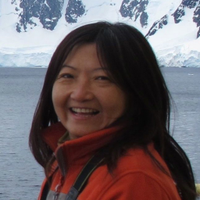
Jane Qiu, PhD@janeqiuchina
Feb 09 22
View on Twitter
Meet China’s bat woman: She’s spent 18 years studying coronaviruses. She’s traced both SARS and covid to bats. Did she cause the pandemic? Is she the victim of a witch hunt? I spent 14 months trying to find answers. Join me in Wuhan and at a bat cave. 1/n
bit.ly/3oDC1sK
Still no new useful info. Those who have already concluded 100% market origins think the following is exculpatory, but it isn't. One possibility has always been that an unmodified bat virus leaked from WIV or Wuhan CDC collections, maybe during BSL2 work
twitter.com/MichaelWorobey
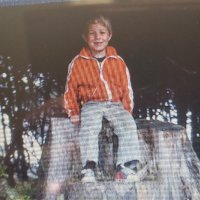
Michael Worobey@MichaelWorobey
Nov 24 22
View on Twitter
Fantastic work from Mang Shi & colleagues:
"a novel recombinant SARS-like coronavirus...with only five amino acid differences between its receptor-binding domain sequence and that of the earliest sequences of SARS-CoV-2" in Yunnan, China.
biorxiv.org/content/10.110
Truly excellent background on what's not known on early cases, but would be easily known if not for PR China's edict to suppress research
And good scientists know it's not proper to make a firm conclusion when the most relevant data are missing
washingtonpost.com/opinions/2022/
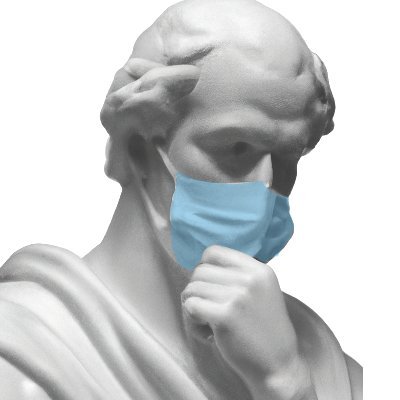
Michael Lin, MD PhD 

@michaelzlin
Associate Professor of Neurobiology & Bioengineering @Stanford ☘️🧪🦠🧠🌈🔬📖🇺🇲🌏 Molecules, medicines, and independent SARSCoV2 analyses. Also @MichaelLinLab
Missing some tweets in this thread? Or failed to load images or videos? You can try to .


















